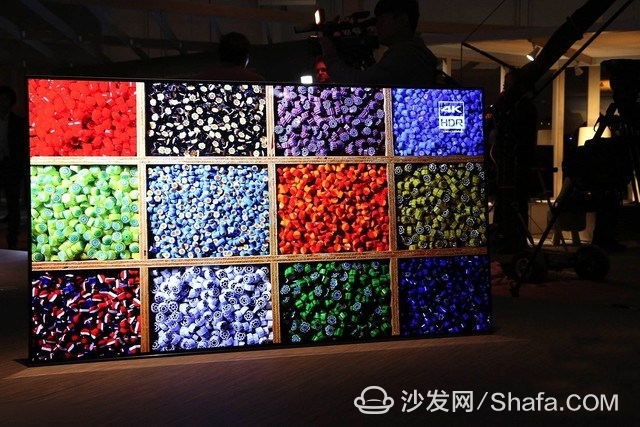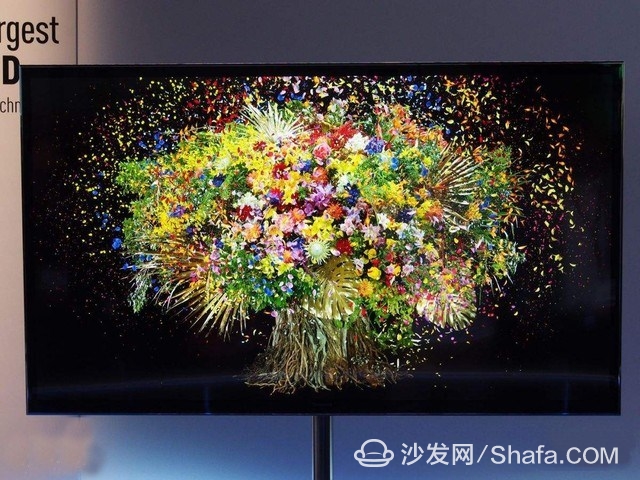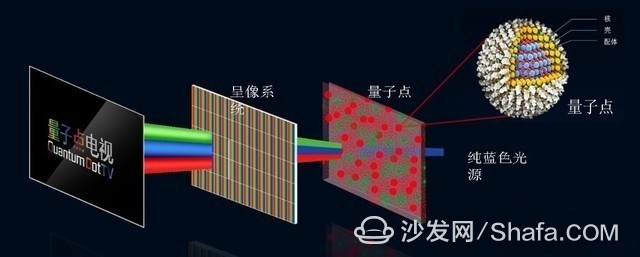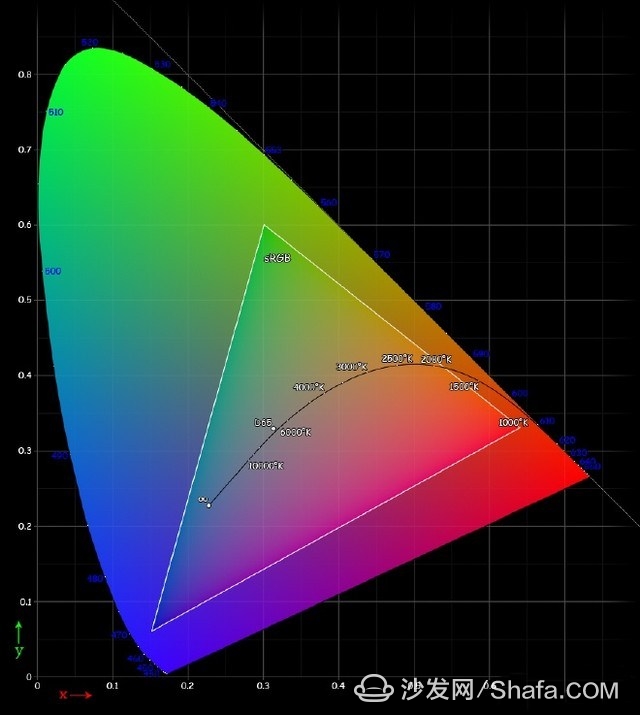
High color gamut is just a gimmick?
However, with the continuous upgrading of display technology, television is not satisfied with simply presenting colors, but is more pursuing the accuracy of colors and the richness of the colors presented. Since the end of 2014, high-gamut TVs have been blessed with new backlight technology assisted by quantum dot materials, which has achieved a higher standard of color gamut coverage for televisions. So in recent years, high-color television has become the focus of TV manufacturers to promote, even with high color gamut as a gimmick to increase TV prices, to attract consumers to buy. So expensive, blind pursuit of high color television, can really bring us more amazing visual experience?

Color can make people's emotions fluctuate
The general consumer's understanding of the color gamut is that the higher the color gamut, the better the color rendering. In fact, this understanding is more one-sided. The color gamut refers to a range region formed by the number of colors that the display device can express, that is, a range of colors that can be represented by various screen display devices, printers, or printing devices. The color of the visible spectrum in the natural world constitutes the largest color space, but for so many colors it requires a more intuitive representation. The CIE International Lighting Association developed a CIE-xy chromaticity diagram for the intuitive performance gamut.

CIE chromaticity diagram (intermediate triangles are NTSC gamut)
In the CIE-xy chromaticity diagram, the range of color gamuts that can be represented by various real-world devices can be represented by a triangular region consisting of RGB three-point lines. The larger the area of ​​a triangle, the larger the gamut of the display device. . However, this range is too large for display technology. The colors we display through the screen are much smaller than this. So in 1953, the National Television Standards Institute (NTSC) developed the NTSC color gamut standard based on the CIE chromaticity diagram and planned a 100% color gamut space, which quantifies the size of the color gamut by percentage.

The emergence of quantum dot technology has further improved the color gamut coverage of television
The color gamut coverage of early LCD TVs could only reach 40% to 50% of the NTSC standard. After that, the coverage of TV color gamuts continued to increase. At present, even the most mainstream LCD TVs can reach about 72% NTSC coverage. In recent years, with the continuous development of wide color gamut technology and quantum dot technology, the NTSC gamut coverage of television has basically reached more than 90%, and some may even reach about 140%. However, such a high color gamut coverage is really as good as the manufacturers advertised?
There are two types of TVs currently on the market, which are our common liquid crystals and OLEDs. Quantum-dot TVs are essentially LCDs because they do not get rid of backlight control. The OLED's display principle is self-luminous. After being excited by electricity, it can directly display very pure red, green and blue primary colors, so the color gamut coverage can easily achieve a higher level. At present, OLED TVs have basically added white pixels (WRGB) to reduce the high color purity of RGB OLEDs.

At present, large-size OLEDs have added white pixels
The most effective way to enhance the color gamut is to start with the backlight and improve the purity of the backlight, especially the red, green and blue wavelengths. At present, the most mainstream method for liquid crystals is to replace the types of LED phosphors. The latest inorganic phosphors enable the white light emitted by LEDs to have higher purity in the red, green, and blue color bands, and can be greatly improved in brightness. For high-gamut TVs using a new generation of inorganic phosphors, NTSC color gamut values ​​can generally reach over 90%, and color purity and energy efficiency are significantly improved.

LCD TVs increase phosphor purity by adding phosphors
Quantum dots are the most ideal materials for improving the color gamut. Its luminescent purity is higher than that of organic molecules and is higher than that of inorganic phosphors. The stability of quantum dots is similar to that of inorganic phosphors, but the processing performance is the same as that of organic molecules. Therefore, quantum dots are quantum. The point can be said to take into account the advantages of organic and inorganic materials. Quantum-dot TVs excite quantum dot crystals on thin films by radiating pure blue light to release pure red light and pure green light, and project the remaining pure blue light onto the imaging system. This provides extremely pure light. Super LED phosphor lighting principle.

Quantum dots are currently ideal light emitting materials
In addition to starting with the purity of the backlight, raising the color gamut of the TV can also be accomplished by increasing the number of primary colors. That is, the structure of the filter plate on the liquid crystal panel is changed from the original three colors to four colors, five colors, or even more. By increasing the number of primary colors and increasing the combination of colors, more colors are displayed. However, this technology has to be greatly changed on the panel and the color grading system, and the technical difficulty and cost are high, so it has not been widely used.

High-gloss television makes the transition to natural colors more natural
At the same time, the colors of red, green, and blue in the high-color television display will be more pure, brighter, and closer to the true color of nature. In fact, from the CIE chromaticity diagram we can see that the red, green, and blue reference colors are all located at the periphery of the gamut space, so only the gamut range is large enough to contain more pure colors. Ordinary TV can't do the most real restoration for pure color, but high color television can show more pure.

The red, green, and blue reference colors are distributed around the gamut space
Although high-gamut TVs have many advantages, they also bring more problems. With the increase in the number of colors, although the screen is more beautiful, the colors displayed are not always accurate. High-gamut televisions have increased the variety of colors and brought a greater burden on the control of color. If the color control is not accurate enough, the displayed image will still be distorted, and it will be far from the true color. Raising the color gamut is of course a good thing, but it should take into account the control of color so that rich colors can have a real effect.

The prerequisite for improving the color gamut is to have precise control over colors, otherwise it would be counter-productive.
Zhongguancun Online, as the country’s largest technology media, has tested many TV products. From the TV products tested by the author, the higher color gamut coverage does not mean that its color performance capability is stronger. In the actual measurement process, many NTSC gamut values ​​for TVs have reached more than 100%, or even more than 110%. However, through static and dynamic test observations, the color accuracy of some products did not meet expectations, and even The appearance of color cast or too bright looks very unnatural.
The purpose of this article is to let everyone face the issue of TV color gamut. Do not blindly listen to TV manufacturers for the promotion of the color gamut and rationally purchase high-range color television.
Smart TV/box information can focus on smart TV information network sofa butler (http://), China's influential TV box and smart TV website, providing information, communication, etc. on TV boxes, smart TVs, smart TV software, etc. Answering questions.
Molded Waterproofing Cable Assemblies
We specialize in waterproofing products overmolding. We can custom build, custom mold, and over-mold your cable designs.
We specialize in molded cable manufacturing for the widest diversity of
cable and connector types, across the whole spectrum of industries. Rich expeirence in developing and proposing solution Special for IP67, IP68 waterproofing products.
Molded waterproofing cable assemblies, waterproof wire harness, waterproofing cables overmolding
ETOP WIREHARNESS LIMITED , https://www.oemmoldedcables.com